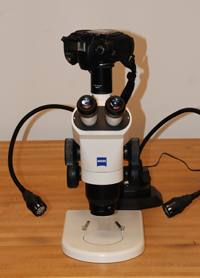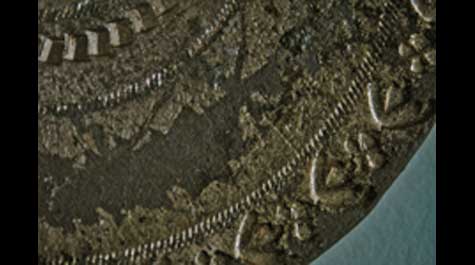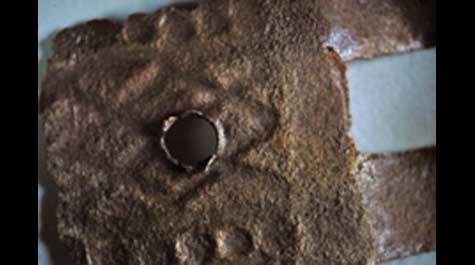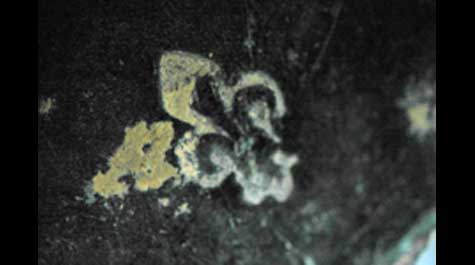Wren Gift Provides Needed Teaching Microscope

Thanks to private donors and a generous gift from the Christopher Wren Association, the Anthropology Department is the proud owner of a new binocular microscope. The scope will be used to examine materials in the department's ethnographic and archaeological collections and to help identify and characterize newly excavated archaeological artifacts.
This new resource will be a vital tool in the education of undergraduate and graduate students. Students use microscopes to examine and understand artifacts and other excavated specimens, and as teachers we use them to illustrate subtle aspects of technological and environmental evidence. In classes students need scopes to perform a variety of analytical and applied procedures; and our graduate students often need microscopes for their own on-going projects of excavation and analysis.
Our goal was to obtain a reasonably priced scope that would give us an underlying flexibility, allowing us to use the new tool for the greatest variety of purposes. Our eventual choice was the Zeiss Stemmi 2000 C, a “robust high precision stereo microscope for all routine tasks.” The new scope includes a port for attaching an SLR camera and a lamp to provide the necessary illumination.
This microscope fills a long-standing gap in the department's teaching and curatorial equipment. One of our microscopes is fifty-plus years old and is broken, and we're using a second twenty-plus-year-old petrographic model as a general examination scope. For teaching we have been using scopes borrowed from Biology and holding classes at the Keck Lab in order to use the equipment there. This new scope won't meet all of our teaching needs – but it's a wonderful start, and provides the department with an essential tool for examining, identifying, and understanding a wide range of objects.
Much of the work which archaeologists perform with material culture involves the investigation of surfaces on a variety of scales. Surfaces often retain clues to past technological manipulations, provide evidence of the use and abuse of artifacts during their "first life," and show the results of deterioration as the natural environment causes changes in these same surfaces.
On an applied level, microscopy is an irreplaceable tool in any attempt to clean and stabilize artifacts. Quite literally, if you can't see what you're doing, you can't do it very well!
Identifying any material, for archaeologists, involves answering two questions. We want to know the physical nature and composition of the object, and, just as essentially, we want to understand the cultural and historical context of the object. These two aspects of every artifact – or culturally used or modified natural material – usually form an inseparable whole, in which composition illuminates and amplifies the context and vice versa. Visual examination is one of the most basic and essential means of engaging in these identifications. Having access to this microscope will be of constant utility to us in our investigations of these phenomena.



















